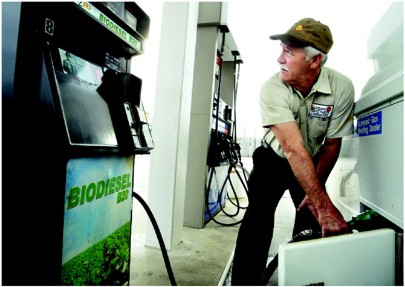From fossil fuels to petroleum to ethanol to modern biofuels, the biofuel industry has taken off this past decade. Fossil fuels are used in more than ninety-five percent of the global transportation markets, but the demand for new and efficient biofuels is growing at a rate ten times faster than the demand for oil. The use of biofuels, ethanol, and biodiesel for automotive industries increases energy independence and reduces greenhouse-gas emissions. Biofuels are produced from renewable resources, but largely from agricultural products. Biofuels were first introduced in the form of diesel to science in the early twentieth century with the invention of Rudofl Diesel’s new engine. It was designed to run on peanut oil. In 1912, Diesel considered that vegetable oils would be the fuel for the future for his engine and the engines of the future. In 1925, Henry Ford, a U.S. automobile industry superpower suggested that corn-based ethanol was the fuel of the future for the automotive industry. By the 1920’s Ford had established a partnership with Standard Oil, and 25% of oil sales were non-petroleum related. The petroleum industry saw the threat, undercut the prices and developed petro-diesel, a petroleum based alternative to vegetable oil. By the early 1940’s the use of any kind of biofuels became virtually non-existant. By the 1970’s the US became dependent on foreign oil. By 1973, the Middle East, controlled most of the world’s oil. In the past nine years, many countries have taken intiative in researching biofuel products. There is currently large production programs in twenty-one of these countries including: Germany, Argentina, Brazil, and the United States of America. |
 Many people have also taken intiative, the famed "Sunrider" boat circumnavigated the globe using 100% biodiesel. In 1997 Joshua Tickell became the first individual to drive his “veggie van” 10,000 miles around the US using nothing but waste vegetable oil from fast food restaurants. David Modersbach and his family were the first group to partially complete the pan-American journey from Oakland to Argentina in 2003 using biofuels. There are three different generations of biofuels. the first generation consists of biofuels made from sugar, starch, vegetable oil and animal fat. The second generation of biofuels were made specifically from lignocellulosic biomass feedstock. The last and final generation of biofuels are made from algae which is very good because it is biodegradeable. Scientists have found that algae prodeuces thirty times more energy per acre then regular agricultural crops. |